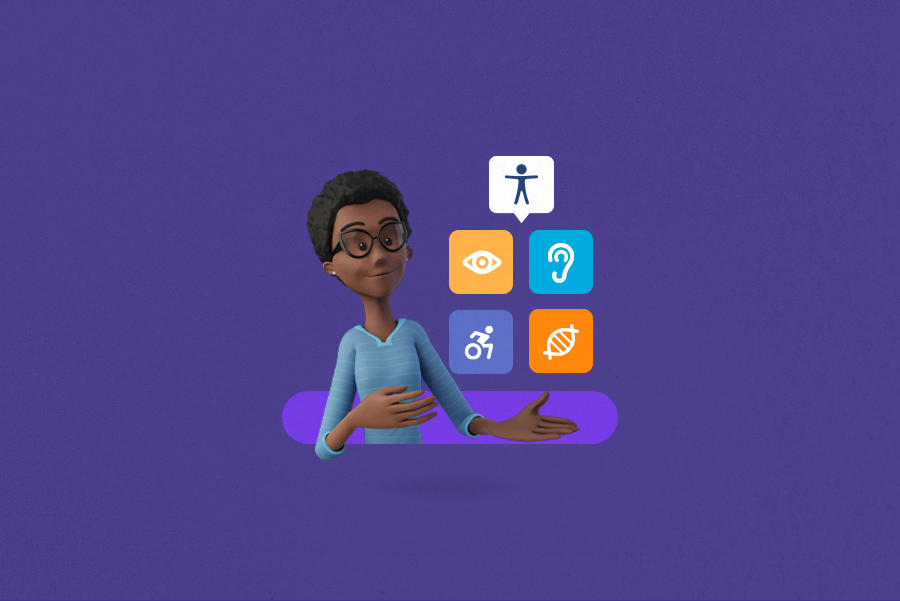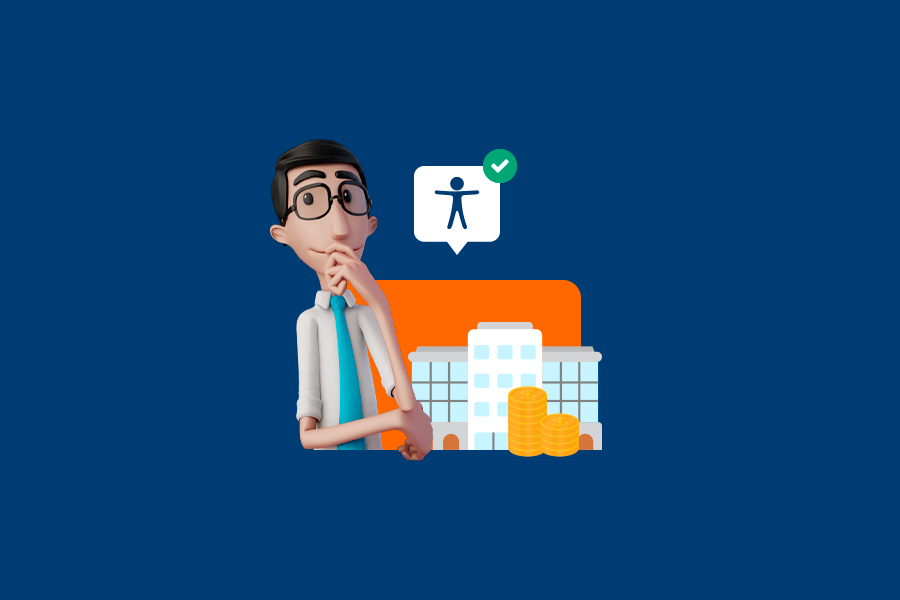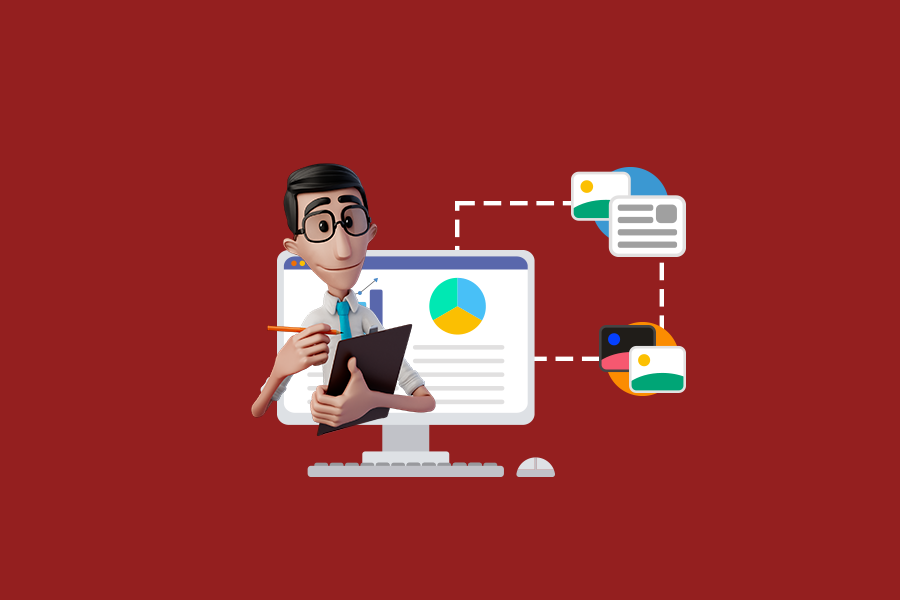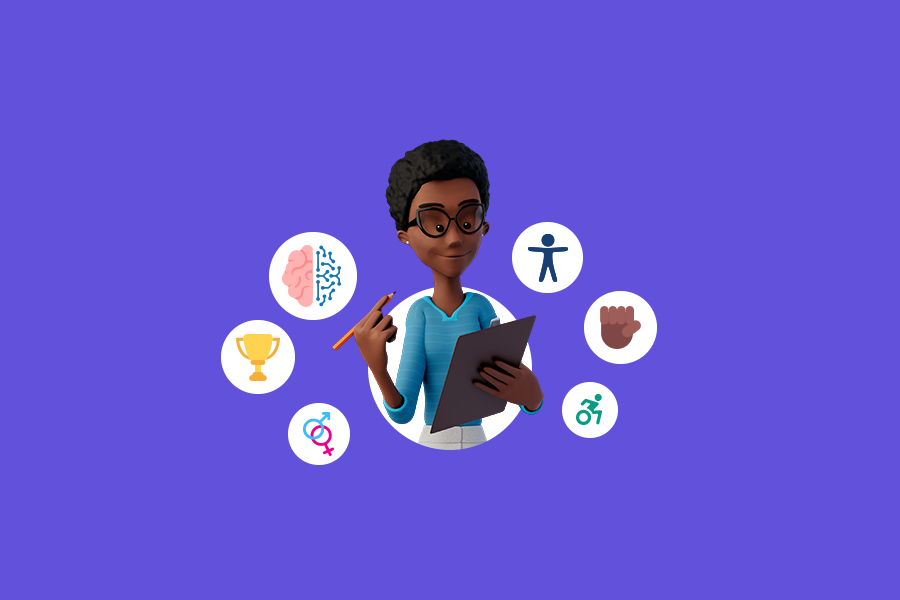
Accessibility: What Does It Mean, What Are The Purpose And Types

In today’s world, accessibility is an increasingly important topic that affects all aspects of society. Ensuring that digital and physical environments are accessible to everyone is crucial for promoting inclusivity and equal opportunities. This article will explore the meaning and purpose of accessibility, as well as the four types of them.
From accessibility settings and standards to testing and implementation, this content will provide an in-depth overview of the various aspects of it. Whether you are a developer, a designer, or simply interested in learning more about accessibility, we will provide valuable insights and information! Shall we start?
What Does Accessible Mean?
The term “people with disability” includes people who are blind, have low vision, are deaf or hard of hearing, have mobility impairments, or have cognitive disabilities. Accessible means that something is designed or modified in a way that allows people with disabilities to use it or access it without encountering accessibility barriers. Accessibility is all about ensuring that everyone, regardless of their abilities or disabilities, can access information, products, services, and environments in a way that is inclusive and equal.
This includes making adjustments to the physical environment, such as ramps or braille signs, as well as to digital environments, such as websites, applications, and other digital technologies. Accessibility is essential for creating a more inclusive and equitable society where everyone has equal access and opportunities to participate fully.
What Is The Purpose Of Accessibility?
To summarize, it is inclusion! The purpose of accessibility is to create a more inclusive environment that is accessible to everyone.
But when we talk about digital accessibility, it is focused on the digital environments. The way of building an accessible web is making digital content accessible, so people with disabilities can access the same information and services as everyone else, which can lead to greater opportunities and a more equitable society.
Accessibility also benefits everyone, as it can make technology easier to use and understand and ensures that everyone has access to the same resources, information, and opportunities. For example, captions on videos not only help people who are deaf or hard of hearing, but they can also help people who are learning a new language or who have difficulty understanding spoken language.
In addition to promoting inclusivity and equal opportunity, accessibility also has legal and ethical implications. Many countries have laws and regulations that require public places, digital platforms, and other environments to be accessible to people with disabilities. Therefore, investing in accessibility is an indispensable requirement for companies to be in compliance with the law. That’s because failure to comply with accessibility standards can result in legal consequences, such as fines and lawsuits.
From an ethical standpoint, accessibility is the right thing to do. Everyone deserves to be able to access information, products, and services, and participate fully in society, regardless of their abilities or disabilities.
What Are The 4 Types Of Accessibility?
Accessibility can be broadly categorized into four major types. These categories refer to different types of disabilities and the barriers that people with those disabilities may face when accessing digital or physical environments. So, let’s explore these 4 types of accessibility:
People With Visual Impairments
People with visual impairments are those who have difficulty seeing or are blind. Data indicates that, globally, at least 2.2 billion people have a near or distance vision impairment.
Visual disabilities can cause difficulty seeing objects, judging distances, or accessing information in visual media. Causes include genetic disorders, degenerative diseases, or physical damage to the eye or brain.
To ensure accessibility, alternative text for images, high contrast between text and background, audio descriptions of videos, large and clear fonts, and avoiding color-only meaning are important practices. Physical accessibility can be improved by providing braille signs, tactile maps, and audio descriptions.
People With Hearing Impairments
Auditory disabilities can result in a partial or complete inability to perceive sounds and access audio-based information presented in media. Common characteristics include hearing loss or total deafness. Auditory impairments can be caused by inner ear nerve malformation or damage, neurological disorders, or physical trauma to the brain.
Best practices to ensure accessibility for deaf people are closed captions and transcripts for audio and video content, visual cues for alarms and notifications, hearing aid compatibility, and hearing loops and interpreters for live events. These measures can help break down auditory barriers and ensure equal access to digital and physical environments.
People With Mobility Impairments
People with mobility impairments are those who have difficulty with physical movements, such as walking or using their arms. Mobility disabilities can cause muscle slowness, tremors, loss of fine motor control, or paralysis, resulting from conditions like cerebral palsy, Parkinson’s Disease, or stroke.
For these individuals, accessing physical environments can be challenging due to barriers such as stairs, narrow doorways, or uneven surfaces.
One of the most important practices is to provide ramps and/or elevators for wheelchair access. In addition, digital accessibility can include providing keyboard-only navigation for websites, ensuring that links and buttons are easily clickable, and providing voice-controlled options for devices.
People With Cognitive Impairments
People with cognitive impairments are those who have difficulty with mental processes such as memory, attention, or problem-solving. One of the most important practices is to provide clear and simple language in written content. Another best practice is to provide consistent and predictable layouts for websites and other digital content.
In addition to digital accessibility, physical accessibility is also important for people with cognitive impairments. This can include providing clear signage and wayfinding cues, as well as providing quiet and calm environments.
What Is An Example Of Accessibility?
Accessibility refers to the ease with which people can access and use a space, service, or product. It is crucial to ensure that people with disabilities can participate fully in society, with comfort and independence. Accessibility standards have been established to ensure that spaces, services, and products are designed to accommodate people with disabilities.
An example of accessibility for people with disability can be seen in the design of buildings. In many countries, buildings have an accessibility code, which requires that buildings be designed with accessibility in mind, including features such as ramps, elevators, and accessible washrooms. These features ensure that people with mobility impairments, such as those who use wheelchairs, can access and navigate buildings independently.
Accessibility standards also apply to the digital world. Android accessibility settings are a set of features and options designed to help individuals with disabilities access and use Android devices more easily. These settings provide a wide range of tools and accommodations, including options for visual, hearing, and physical impairments.
Some examples of Android accessibility settings include TalkBack, a screen reader that provides spoken feedback to users who are blind or have low vision; closed captioning, which provides subtitles for videos; and switch access, which allows individuals who have difficulty using a touch screen to navigate their device using external switches.
In the tourism industry, accessibility is becoming increasingly important too. Many destinations around the world are working to make their attractions, accommodations, and services more accessible to people with disabilities. Installing wheelchair ramps, providing accessible washrooms, and offering assistive technology, such as hearing loops and text-to-speech software are some of these attitudes.
For deaf people, there are also some assistive technologies, as for example, American Sign Language interpreters and translators; interpreter windows or subtitles on the vídeos with audio; virtual translator apps, such as the Hand Talk App, that works as a pocket Sign Language translator or dictionary.
Overall, accessibility is about creating an inclusive society where everyone can participate fully, regardless of their abilities. By designing spaces, services, and products with accessibility in mind, we can ensure that people with disabilities have equal access to the world around them.
How To Make Your Website And Web Tools Accessible?
In today’s world, the internet is a critical component of daily life, and having an accessible website or web tool is crucial for ensuring that everyone can participate fully and with independence in society. Accessibility web design is a set of guidelines that web designers can follow to create websites that are usable by everyone, including people with disabilities. In this article, we will discuss how to make your website and web tools accessible, including accessibility code and accessibility for Android.
The first step to making your website and web tools accessible is to understand accessibility guidelines. The Web Content Accessibility Guidelines (WCAG) provide a set of standards for web accessibility. WCAG 2.2, the latest version of the guidelines, provides a set of recommendations for making web content accessible to people with disabilities.
These guidelines cover a wide range of topics, including text alternatives for non-text content, keyboard accessibility, and color contrast. The accessibility testing for WCAG compliance identifies the accessibility barriers people with different disability types may face on the web.
Another great tip for accessibility is a keyboard accessibility, which is essential for people with disabilities who may not be able to use a mouse. Providing keyboard accessibility means ensuring that users can navigate your website using only a keyboard. This is achieved by providing keyboard shortcuts, using logical tab order, and ensuring that interactive elements, such as buttons and links, can be activated using the keyboard.
Color contrast is crucial for people with visual impairments. The WCAG guidelines recommend a minimum contrast ratio of 4.5:1 between text and its background. Designers should also avoid using color alone to convey information, as this can be challenging for people with color vision deficiencies.
Use accessible Android development tools is another form to make your web tools accessible. App developers should use accessible development tools, such as the Accessibility Scanner, to test their apps for accessibility issues. Developers should also provide descriptions for all images and ensure that all content is accessible using assistive technologies.
Conclusion
It is essential to ensure that people with disabilities can access information, services, and products without any barriers, making their lives easier and more fulfilling. The purpose of accessibility is to remove these barriers and provide equal opportunities for everyone, regardless of their disabilities.
Don’t miss out on the opportunity to discover the largest Sign Language translation platform in the world! Visit Hand Talk today and explore the cutting-edge technology that is revolutionizing accessibility!


